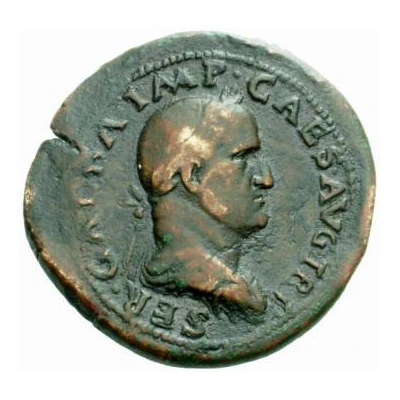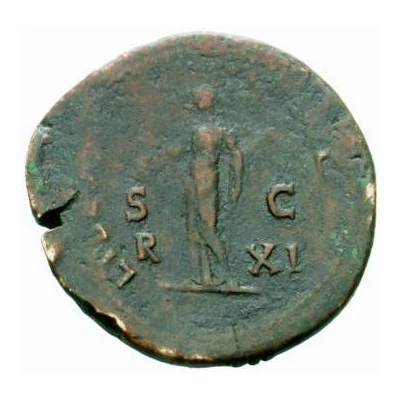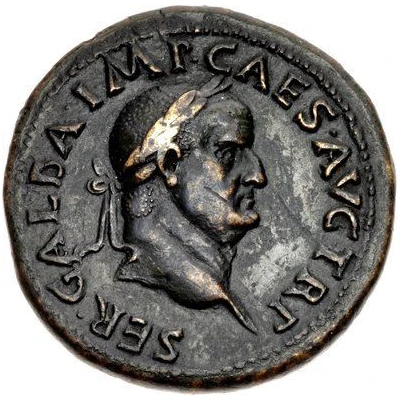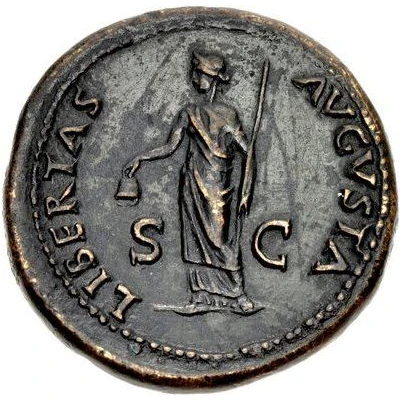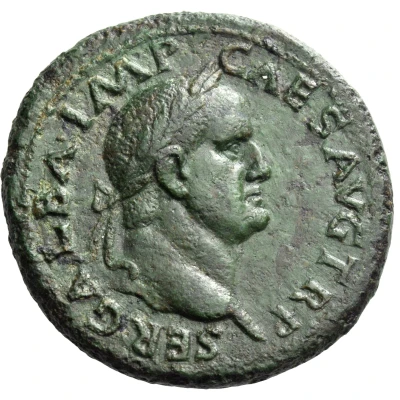
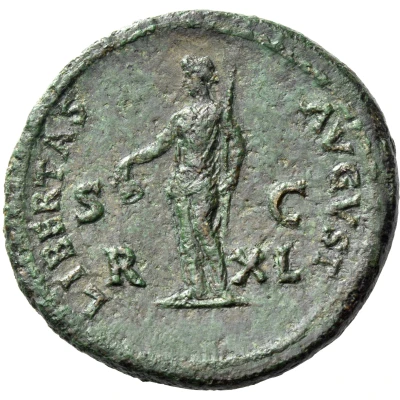

© Numismatica Ars Classica NAC AG
Sestertius - Galba LIBERTAS AVGVST S C R XL; Libertas
| Bronze | - | - |
| Issuer | Rome › Roman Empire (27 BC - 395 AD) |
|---|---|
| Emperor | Galba (Servius Sulpicius Galba) (68-69) |
| Type | Standard circulation coin |
| Years | 68-69 |
| Value | 1 Sestertius = ¼ Denarii |
| Currency | Denarius, Reform of Augustus (27 BC – AD 215) |
| Composition | Bronze |
| Shape | Round (irregular) |
| Technique | Hammered |
| Demonetized | Yes |
| Updated | 2024-10-06 |
| Numista | N#245240 |
|---|---|
| Rarity index | 100% |
Reverse
Libertas, draped, standing left, holding pileus in right and rod in left
Script: Latin
Lettering: LIBERTAS AVGVST S C R XL
Translation:
Liberatlitas Augustorum, Senatus Consultum, Remissa Quadragesima
Generosity of the Emperor. Decree of the senate. Abolishment of the fortieth (Quadragesima Litium, Caligula's litigation tax).
Comment
Source: Online Coins of the Roman Empire (OCRE)Interesting fact
The Sestertius - Galba coin was minted during the reign of Emperor Galba, who ruled the Roman Empire from 68 to 69 AD. The coin's obverse features a portrait of Galba, while the reverse depicts the goddess Libertas, who is personified as a woman holding a liberty torch and a scepter. The coin's design was meant to promote the idea of liberty and freedom, which was an important concept during Galba's reign. Interestingly, the Sestertius - Galba coin was made of bronze, which was a common material used for coins during the Roman Empire. However, the coin's bronze composition was not just a practical choice, but also a symbolic one. Bronze was associated with strength and durability, which were qualities that the Roman Empire wanted to convey through its currency. Overall, the Sestertius - Galba coin is a fascinating piece of history that provides insight into the political and cultural values of the Roman Empire during the 1st century AD.
